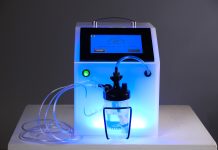Michael Morrison, Senior Researcher in Social Science at the University of Oxford, illustrates the importance of emerging biomedical innovations in the UK
Like many states, the UK government has committed to supporting ‘disruptive’ innovations.1 These are considered to hold greater potential for economic growth and development than incremental advances in established technologies. Within this broad strategy the ‘bioeconomy’, the area of industrial activity based on commercialising life sciences research is given a particular importance. The bioeconomy includes sectors like biofuels, agricultural biotechnology, and medical biotechnology.2 In the latter case, advances in medical biotechnologies hold promise for treating, and even curing, serious and chronic diseases as well as driving growth and prosperity. Regenerative medicine (RM), the biotechnology-based use of cells, tissues, and genes as medicinal products, is certainly ‘disruptive’ in that they differ in important ways from traditional pharmaceuticals and medical devices.3
The UK has taken a number of policy measures to support the development of the RM industry. The Regenerative Medicine Platform funding schemes promote and co-ordinate academic translational research. The Catapult centres, including the Cell and Gene Therapy Catapult, the Medicines Discovery Catapult and the High Value Manufacturing Catapult, provide advice, facilities and infrastructure to support businesses, especially Small and Medium-sized Enterprises (SMEs); with potential to contribute to the RM value chain. The Medicines and Healthcare products Regulatory Agency (MHRA) Innovation Office offers a RM advice service to help academic and commercial developers navigate the complex regulatory framework for biological therapies, while the recent Accelerated Access Review proposed a raft of measures to speed up the regulatory timeline for ‘transformative’ new therapies more generally.4
Gene editing
However, it does not necessarily follow that all parts of the biomedical sector will be equally disrupted by any given RM technology, nor that all RM technologies will be disruptive in exactly the same way.5 The ESRC-funded Biomodifying Technologies project6 analysed three case studies of biotechnologies with disruptive potential: ‘gene-editing’ which allows faster, more accurate genetic modification, induced pluripotent stem cell (iPSC) technology that allows an ordinary skin or blood cell to be turned into a stem cell capable of producing any tissue type in the human body, and 3D bioprinting which can produce three-dimensional structures made from living tissues.
Gene editing and iPSC are advances on earlier generations of genetic engineering and stem cell technologies. They align reasonably well with the existing skill sets, goals, equipment, and techniques of researchers working in both academic and commercial settings. They are not especially ‘disruptive’ at the level of basic research. Bioprinting requires skills, tools and techniques from engineering, materials chemistry, computer-aided design, biology, and medicine. This has necessitated greater ‘disruption’ in the form of organisational change, to create new research groups and foster collaborative learning across disciplines.
For all three technologies, there are also well-established pathways to extract near-term value from basic research: peer-reviewed publications, patent applications, and the market for reagents, tools, and equipment. Each case demonstrates clear growth in the number of papers, patents, and reagent/equipment sales, although the rate of acceleration is greatest for CRISPR-based gene editing and slowest for bioprinting.
The pathways to realise longer-term, clinical, and economic value are less well established for RM. The healthcare sector is seen as particularly resistant to disruptive innovations, due to the lengthy regulatory process and powerful incumbent firms, which have historically been wary of investing in RM.7 The process of scaling laboratory protocols for cell or gene-based therapies into industrial procedures, taking products through clinical trials to establish safety and efficacy, and securing reimbursement, is every bit as experimental and involves as much learning by trial and error as exploratory laboratory research, but with much higher financial stakes. Interest from incumbents appears to be growing, as recent years have seen an increase in the number of cell or gene-based therapies reaching the market. However, there is no ‘off the shelf’ manufacturing solution, as different RM products have different attributes: in the industry there is a popular idiom “the product is the process.” This means that the acceleration seen at the basic R&D stage does not unproblematically translate into speedy translation further down the pathway.
Rather, initial clinical applications of gene editing, iPSC and bioprinting are targeted at a more limited range of ‘niche’ applications. The niches for each technology are shaped by a number of critical factors. Smaller tissues, such as the eye require fewer replacement cells or lower titres of gene editing vector, which are more manageable with current manufacturing capacity. The challenges of manufacturing at scale, combined with high anticipated costs, combine to make narrowly defined subsets of disease categories, with high unmet need, a preferred route for commercial development, especially where there is potential for a disruptive new product to demonstrate significant Quality of Life gains over the current standard of care.
Indications that draw on procedures, standards and requirements established for previous therapies are seen as less risky and thus promising clinical targets. Gene editing to treat thalassemia and other blood disorders builds on decades of clinical expertise with the body’s haematopoietic (blood-forming) system, gained by treating leukaemia patients. Even treatments that were not ultimately successful such as foetal stem cell transplants for Parkinson’s disease (PD) can provide expertise with clinical trials and regulation to support a next-generation iPSC-based cell therapy for PD.
While the government has rightly been wary of ‘picking winners’, as particular niches for early clinical adoption of biomodifying technologies become apparent they may require specific, targeted support, to complement the broader support for the field already provided by polices described above. Innovations in related fields such as biomaterials and automation, potentially supported by the High Value Manufacturing Catapult, are likely to improve manufacturing capacity and speed over time. These innovations may be relatively incremental in the manufacturing phase but could have disruptive effects further down the value chain at the clinical delivery phase, as greater supply makes biomodifying RM therapies accessible to less tightly defined patient cohorts. The next policy challenge will be to provide targeted support for clinical delivery whilst avoiding lock-in to infrastructure or procedures that would inhibit the evolution of the field over time.
The research underpinning this piece was supported by the Economic and Social Research Council grant number ES/P002943/1 and the Leverhulme Trust grant number RPG-2017-330
References
1 Department for Business, Industry and Industrial strategy (2017) Industrial Strategy: building a Britain fit for the future. https://assets.publishing.service.gov.uk/government/uploads/system/uploads/attachment_data/file/730048/industrial-strategy-white-paper-web-ready-a4-version.pdf
2 Department for Business, Industry and Industrial strategy (2018) Bioeconomy strategy: 2018 to 2030. https://assets.publishing.service.gov.uk/government/uploads/system/uploads/attachment_data/file/761856/181205_BEIS_Growing_the_Bioeconomy__Web_SP_.pdf
3 Open Access Government (2019) The promises and challenges of biomodifying technologies for the UK https://www.openaccessgovernment.org/biomodifying-technologies/68041/
4 Accelerated Access Review (AAR). (2016). Final Report: Review of Innovative Medicines and Medical Technologies. London: The Crown.
5 Joyce Tait & David Wield (2019) Policy support for disruptive innovation in the life sciences, Technology Analysis & Strategic Management, DOI: 10.1080/09537325.2019.1631449
6 Open Access Government (2019) The promises and challenges of biomodifying technologies for the UK https://www.openaccessgovernment.org/biomodifying-technologies/68041/
7 Joyce Tait & David Wield (2019) Policy support for disruptive innovation in the life sciences, Technology Analysis & Strategic Management, DOI: 10.1080/09537325.2019.1631449
Please note: This is a commercial profile











